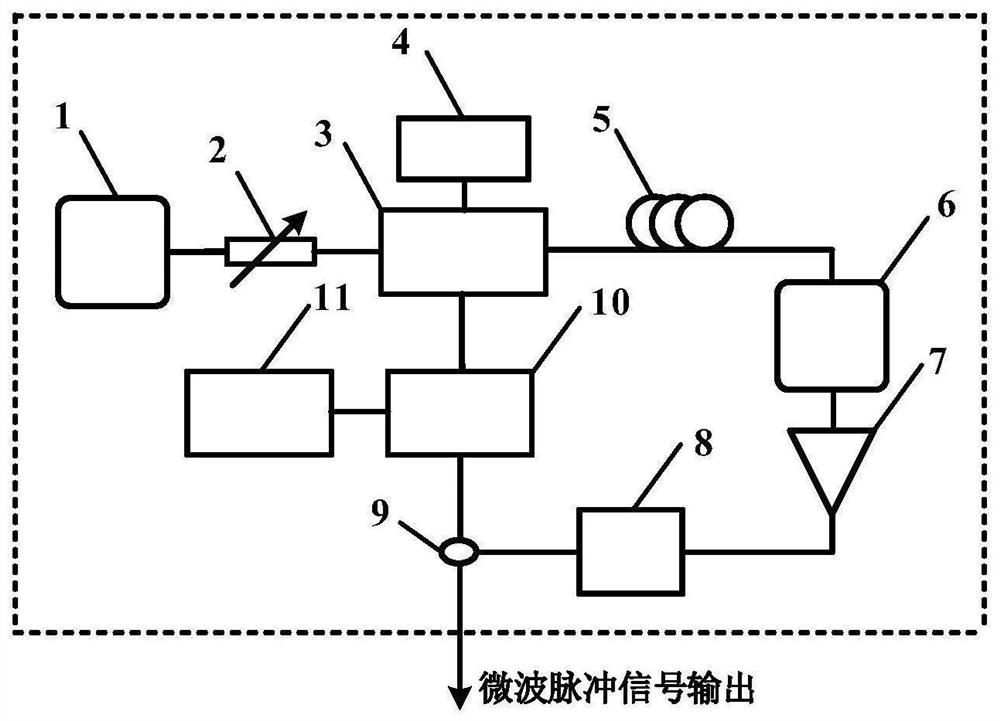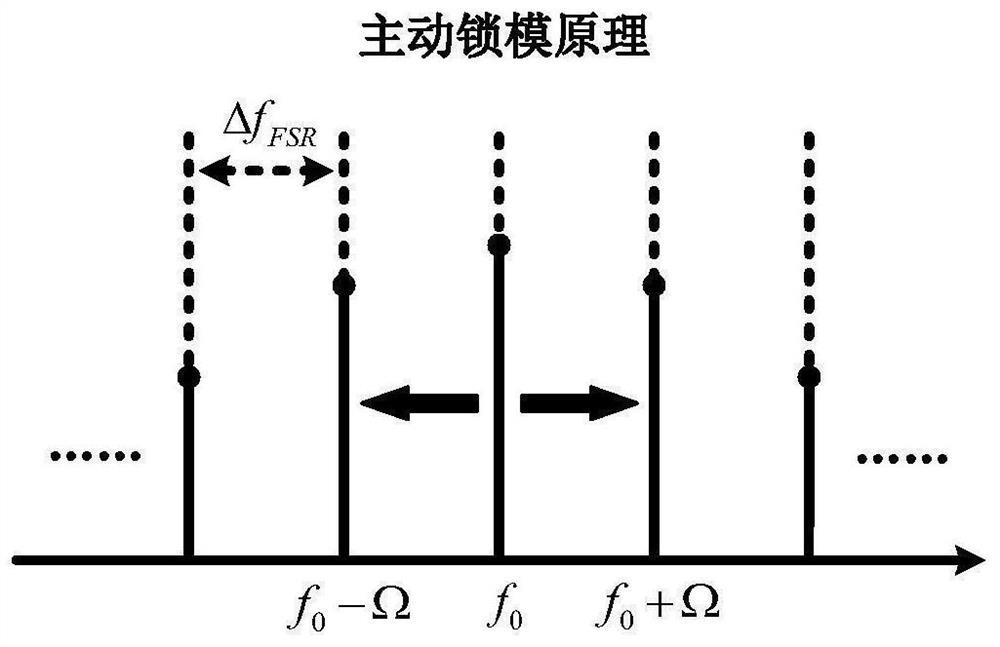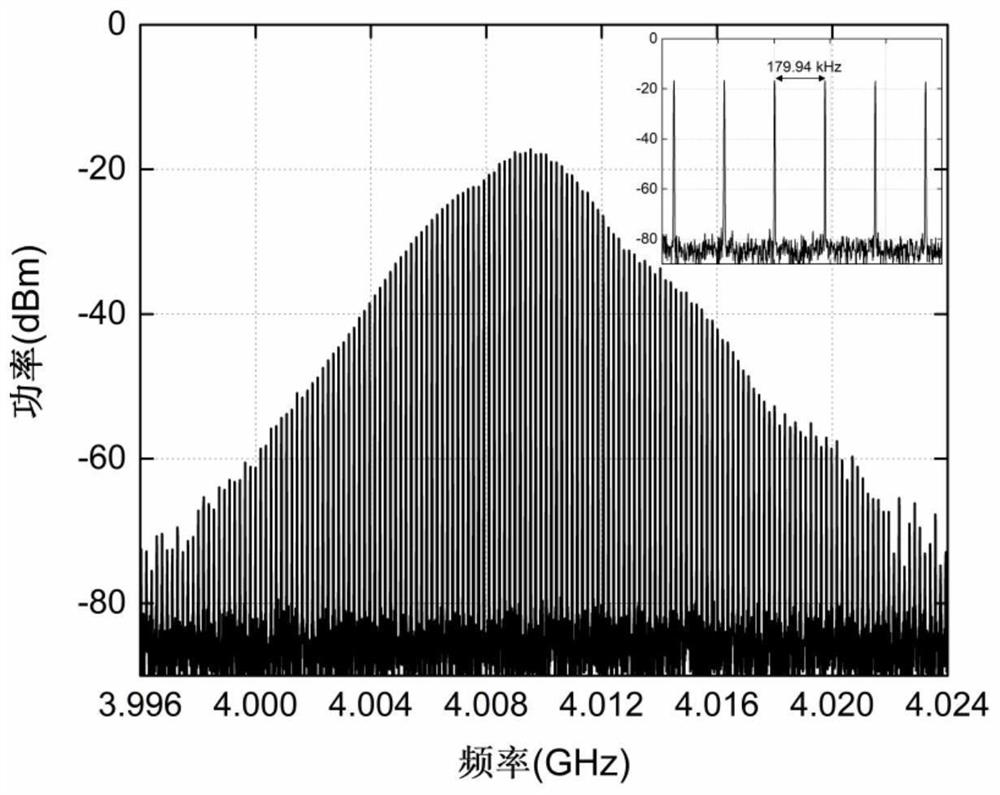Microwave pulse generation device and method based on time domain mode-locked optoelectronic oscillator
An optoelectronic oscillator and a technology for generating methods, which are applied in the structure/shape of optical resonators, lasers, laser parts and other directions, can solve the problems of difficult radio frequency pulse signals and difficult to realize repetition frequency tunable radio frequency pulse signals, etc. The effect of high carrier frequency microwave pulse signal generation and low phase noise
- Summary
- Abstract
- Description
- Claims
- Application Information
AI Technical Summary
Problems solved by technology
Method used
Image
Examples
Embodiment 1
[0044] according to figure 1 As shown in the structure, active mode-locking technology is used to realize microwave pulse generation based on time-domain mode-locked optoelectronic oscillator. In the experimental system, the DC light source uses a DFB laser with a center wavelength of 1560nm and an output power of 17dBm. The adjustable optical attenuator 2 adopts a knob type, the operating bandwidth of the electro-optical intensity modulator 3 is 20 GHz, and the length of the single-mode optical fiber 5 is 1.1 km. The analog bandwidth of the photodetector 6 is about 15 GHz, the operating frequency range of the electrical amplifier 7 is 2 GHz-18 GHz, and the gain is about 25 dB. The center frequency of the electrical filter 8 is about 4GHz, its 3dB bandwidth is 70MHz, and the working frequency range of the electrical modulator 10 is 15MHz-18GHz. In the experiment, a spectrum analyzer is used to test the spectrum characteristics of the output microwave pulse signal of the pres...
Embodiment 2
[0048] When setting Ω=N×Δf FSR And when N≥2, the present invention can realize the harmonic mode-locked photoelectric oscillator. Similar to Example 1, at first according to figure 1 The connection system shown, the devices used in the experiment are the same as those in Example 1. The difference is that the frequency of the sinusoidal signal output by the function generator 11 is set to Ω=359.88kHz, satisfying Ω=2×Δf FSR , and then realize the harmonic mode-locked optoelectronic oscillator. Therefore, in Embodiment 2, the repetition frequency of the generated microwave pulse signal is twice the free spectral range of the resonator. Figure 6 shows the frequency spectrum of the microwave pulse signal generated by the harmonic mode-locked photoelectric oscillator measured when the spectrum analyzer is set to Span=30MHz and RBW=5kHz, and image 3 Compared to that, the frequency spacing of the signal increases. Also set the sampling rate of the high-speed real-time oscillosco...
PUM
 Login to View More
Login to View More Abstract
Description
Claims
Application Information
 Login to View More
Login to View More - R&D
- Intellectual Property
- Life Sciences
- Materials
- Tech Scout
- Unparalleled Data Quality
- Higher Quality Content
- 60% Fewer Hallucinations
Browse by: Latest US Patents, China's latest patents, Technical Efficacy Thesaurus, Application Domain, Technology Topic, Popular Technical Reports.
© 2025 PatSnap. All rights reserved.Legal|Privacy policy|Modern Slavery Act Transparency Statement|Sitemap|About US| Contact US: help@patsnap.com



